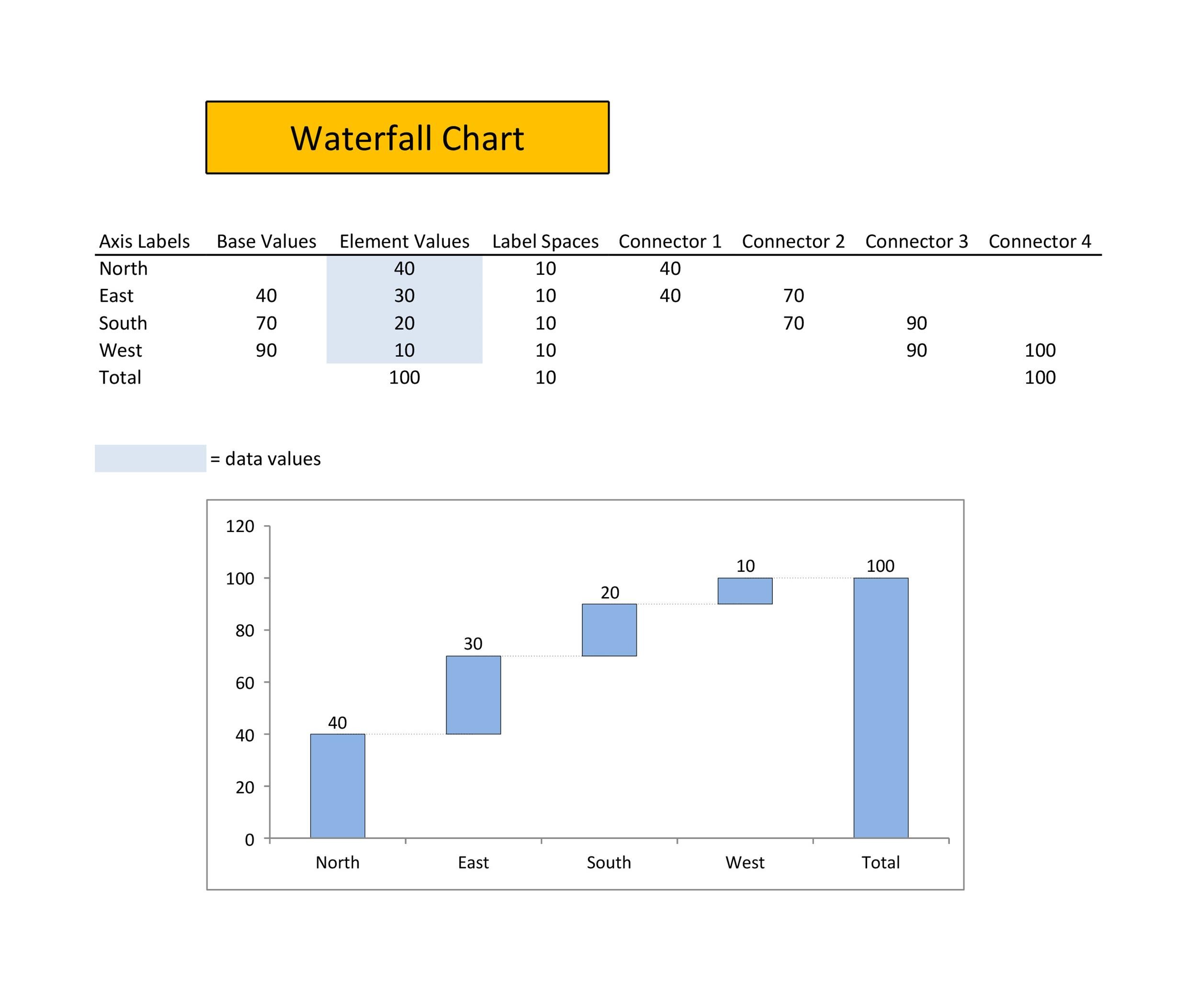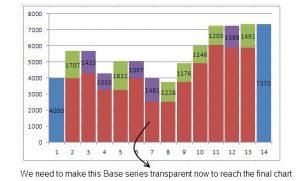

- Create an excel waterfall chart update#
- Create an excel waterfall chart plus#
- Create an excel waterfall chart series#
Highlight the values in Columns D:F and, from the “Insert” tab, add a stacked column chart: Now you have all the formulas and data that you’ll need.ġ. This formula returns the portion of the bar to be graphed below the x-axis. This formula returns the portion of the bar to be graphed above the x-axis. To solve this problem, you’ll need to trick Excel into producing the graph that you want to see, and the trick will require some additional formulas.

This would work if all of your data were positive, but those values that cross the x-axis will foil the graph. You might be tempted now to insert a stacked column graph. In Column C, create a running total (C3=B3+C2). Unfortunately, Excel does not include a native waterfall chart, but you can create one with only a few simple formulas.Ģ. This is an excellent choice for illustrating cumulative numbers or running totals, even when some values are negative. The answer is an Excel waterfall chart! A waterfall chart solves the problem by allowing each data point to begin where the previous data point ends. Have you ever needed to present a chart that displays component data that roll up to a total? If all of the values are positive, Excel’s stacked column chart works beautifully but it breaks down when your data includes both positive and negative values. Set one of the values as a Total, making it go back to the horizontal axis of the chart instead of going up or down from the previous value.By Christy Perry Categories: Advanced Excel Tags: Waterfall Chart.Change the fill color for this Series only.
Create an excel waterfall chart series#
From this menu you can select a specific Series from your chart, and then: To edit the format of a specific Series on your chart, click the second tab, Series Options.
Create an excel waterfall chart update#
So if you wish to edit the format of your labels, you can just format the source and update the chart. The chart labels will automatically be formatted the same way as the cells in your data source. Change the number format with a specific number of decimals for either values and/or percentages.Hide or show totals for Categories or Labels.Add, remove or edit the title of your chart.To edit a Waterfall chart, right-click hit and hit Edit Waterfall chart.įrom the Chart Options tab of this edition menu, you can: If you have multiple series to show, use additional rows, as in the example below: The typical Waterfall having only 1 series, the data would be organized with just a header row and a row for the series values. Your data should be organized with 1 column for each item in the Waterfall. Select your data, including the row and column headers, and click OK to validate.A dialog box will open, asking you to select the data source.From Excel, click Create Waterfall chart.You can easily customize the chart design, changing colors, borders, labels etc.Ĭurrently, Waterfall charts can only be created from the Excel ribbon of Power-user.Show only one series, or cumulate multiple series on the same chart,.Easily define totals to create waterfalls that can be ascending, descending or both,.Power-user lets you build waterfall charts with amazing flexibility: Aside fro enabling the Waterfall chart to users with an older version of Office, Power-user Waterfalls enable showing multiple series of data (for instance, 2 products) on a single Waterfall.Ĭreating a Waterfall chart with Power-user Users with Office 2016 or higher already have access from built-in Waterfall charts.

Create an excel waterfall chart plus#
Running a gap analysis, explaining visually what factors impacted positively and negatively a specific metric (for instance: activity in year N explained by activity in year N-1, minus churn, plus client acquisitions).Displaying all the financial aggregates contributing to a Profit & Loss Statement,.Some typical use cases for a waterfall chart are: The totals at the beginning and end of year are shown in blue. Positive values are shown in green, while negative ones are shown in red.

In the example chart below, you can see how the total at the end of the year is explained by each monthly variation. Waterfall charts ideal to represent how a total can be broken down into multiple items that are being added or substracted. Creating a Waterfall chart with Power-user.They very successfully illustrate how multiple positive or negative items add up to a total. Waterfall charts, also known as bridge chart, are one of the most popular charts in finance.


 0 kommentar(er)
0 kommentar(er)
